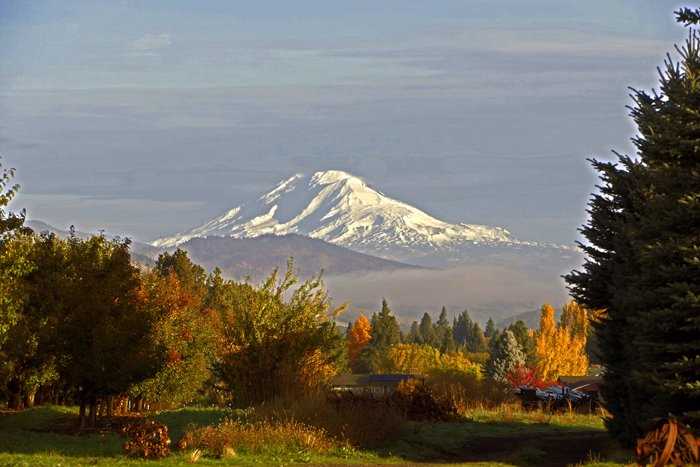As the sky grew lighter this morning, we were treated to a view of the sunny peak of Mount Hood just peeking over the hills to the south of the National Geographic Sea Lion at our dock in the town of Hood River. The river, originally named by Lewis and Clark for Expedition member Francois Labiche, waters the forests and fruit farms on the slopes of the mountain. Lt. William Broughton of the (British) Vancouver Expedition named the mountain in October 1792. We traveled by coach to one of two destinations, either the Western Antique Aeroplane and Automobile Museum or the Mosier Tunnels. WAAAM contains hundreds of antique cars, trucks, and other motorized vehicles (all in driveable condition) and dozens of antique airplanes (all in flyable condition). We wandered over the more than three acres of displays. Other guests walked along a portion of the Historic Columbia River Highway to the Mosier Tunnels, carved through the mountainside so vehicles could travel through the beauty of the Columbia River Gorge. Some of us biked through the tunnels and back to town while others hiked back. The big leaf maples were at the peak of their color. Later in the morning, we had the opportunity to visit the Double Mountain Brewery to taste their brews.
During the afternoon, we shopped in Lindblad’s Global Market and then gathered on deck to view the Columbia River Gorge, whose high slopes on the Oregon side had been scorched by fires last month. We viewed the massive Bonneville Lock and Dam complex, with its two power stations, spillway, and lock chamber. We made our final lock passage, descending 70 feet to the level of the now free-flowing Columbia River. After Grace Winer’s lecture on stratovolcanoes of the Cascade Range, we glimpsed Multnomah Falls, cascading down from the Oregon side of the Gorge.







